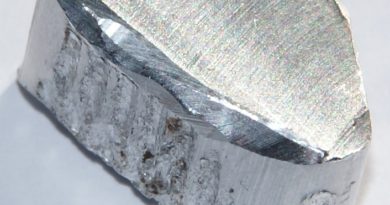Hillside Aluminium test its maximum technical capacity
Hillside Aluminium saleable production increased by 3kt to a record 718kt in FY20 as the smelter continued to test its maximum technical capacity, despite the impact to production from increased load-shedding.
The Hillside Aluminium smelter is located in Richards Bay in the South African province of KwaZulu-Natal and is 100 per cent owned and operated by South32 with a solid metal production capacity of 720,000 tonnes per year.
Hillside Aluminium is the largest aluminium smelter in the southern hemisphere. The smelter produces high-quality, primary aluminium for the export and domestic markets.
To support the development of the downstream aluminium industry in South Africa a portion of liquid metal is supplied to Hulamin, a local company that produces products for the domestic and export markets.
Operating unit costs decreased by 25 per cent in FY20 to US$1,531/t as the smelter benefitted from lower raw material input prices, lower aluminium price-linked power costs and a major workforce restructure that was concluded in June 2019. Alumina, coke, pitch and aluminium tri-fluoride accounted for 54 per cent of the smelter’s cost base in FY20 (FY19: 58 per cent).
The smelter sources alumina from South32’s Worsley Alumina refinery in Australia with prices linked to the PAX on an M-1 basis, while its power is sourced from Eskom under separate contracts for its three potlines.
South32 has been engaging with Eskom on a new pricing arrangement for the smelter, agreeing a new tariff to cover power supplied for a 10-year period. The new tariff is South African rand-based, with a rate of escalation linked to the South Africa Producer Price Index.
While the new tariff is being considered for approval by the National Energy Regulator of South Africa, South32 has entered into an interim arrangement for power supply with Eskom.
FINANCIAL PERFORMANCE
Underlying EBIT increased by US$178 million in FY20 to US$103 million as a 13 per cent decrease in the average realised price of aluminium (-US$198 million) was more than offset by lower raw material input costs (+US$239 million), increased sales volumes (+US$35 million), a weaker South African rand (+US$31 million), lower aluminium price-linked power costs (+US$23 million) and lower labour costs (+US$22 million) following the major workforce restructure concluded in June 2019.
Pot relining activity also reduced (+US$23 million) in FY20, with 65 pots relined at a cost of US$248 thousand per pot (FY19: 171 pots at US$249 thousand per pot).
CAPITAL EXPENDITURE
Sustaining capital expenditure decreased by US$6 million in FY20 to US$13 million.
COMMUNITY INVESTMENT
We invested US$2.0 million in communities around Hillside Aluminium in FY20, with a focus on local skills and economic development, crime prevention and strengthening healthcare services.




